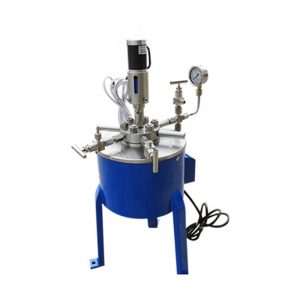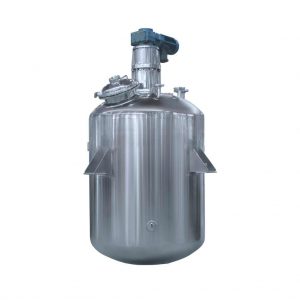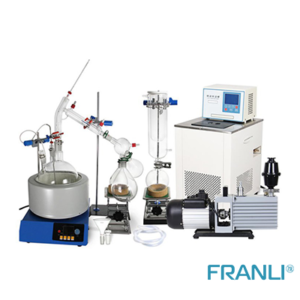Home » A Comprehensive Guide to Different Types of Glass Reactors
A Comprehensive Guide to Different Types of Glass Reactors
Glass Reactor
Glass reactors are essential equipment in the field of chemical synthesis and pharmaceutical research. They offer numerous advantages such as high chemical resistance, visibility of reactions, and ease of cleaning.
Details of Glass Reactor
- Using the latest reaction technology
- It has high temperature resistance, corrosion resistance, and high durability.
- Heating methods include steam, electric heater, high temperature heat transfer oil
- Using jacket, half pipe, fan coil, and other structures
Application: Chemicals, pharmaceuticals, dyes, pesticides, petroleum, food additives, etc.
The different types of glass reactors offer unique advantages and are suitable for various applications across industries. Their durability, visibility, and ability to withstand a wide range of chemical processes make them indispensable in chemical, pharmaceutical, and other related industries.
1. Single-Layer Glass Reactor:
The single-layer glass reactor is the most basic type, consisting of a glass vessel with a heating or cooling jacket. It is widely used for simple chemical reactions, distillation, and purification processes. With its transparent design, operators can easily monitor the reaction progress.
2. Double-Layer Glass Reactor:
The double-layer glass reactor adds an additional layer to the structure, effectively providing insulation and improving temperature control. This type of reactor is suitable for reactions that require precise temperature regulation, such as crystallization and reflux experiments.
3. Triple-Layer Glass Reactor:
The triple-layer glass reactor features an extra layer between the inner and outer glass vessels, enhancing the system’s thermal insulation properties. It is commonly utilized for reactions involving highly reactive or volatile substances, as it offers an extra level of protection and minimizes heat loss.
4. Jacketed Glass Reactor:
The jacketed glass reactor employs a jacket around the vessel to circulate heating or cooling fluids. These reactors consist of an inner vessel that holds the reactants, while the outer vessel provides a layer for heating or cooling the contents. They are widely used in chemical industries due to their durability and the visibility they offer, allowing users to observe the reactions taking place. The jacketed design also enables a digital display of mixing chemicals at high speed, making them suitable for a wide range of processes in chemical industries.
5. Photocatalytic Glass Reactor:
Photocatalytic glass reactors are specifically designed for photochemical reactions. They feature a glass vessel with an added light source that facilitates the activation of photocatalysts. This type of reactor is widely used in environmental research, water treatment, and solar energy conversion.
6. High-Pressure Glass Reactor:
High-pressure glass reactors are built to withstand elevated pressures, making them suitable for hydrogenation, catalytic reactions, and supercritical fluid extractions. They are equipped with reinforced glass vessels and robust sealing mechanisms to ensure safe and efficient operation under high-pressure conditions.
7. Rotatable Lift Glass Reactors:
This type of glass reactor features a manual lifting body that can easily facilitate bulk handling. The kettle-like component is rotatable, ensuring easy cleaning after experiments. They are particularly useful in applications where thorough cleaning and maintenance are essential, such as in the pharmaceutical and chemical industries.
Glass reactors are versatile tools used in a wide range of scientific and industrial applications. From single-layer reactors for simple reactions to high-pressure reactors for complex processes, each type serves a specific purpose. Choosing the right glass reactor for your research or production needs is essential for achieving optimal results. Always consider the specific requirements of your reactions, including temperature control, pressure range, and reaction scale, when selecting a glass reactor.
Welcome to send inquiry to us and let’s make a win win business together !
Guidelines For Chemical Reactor
FRANLI has several complete chemical reactor production lines. Our chemical reactor adopts the latest infinitely variable speed reducer device, the sealing device can be a mechanical seal, and the heating and cooling can adopt the structure of a jacket, half pipe, fan coil, etc., The heating methods include steam, electric heater, and high-temperature heat transfer oil to achieve different safe processing environments such as acid resistance, heat resistance, wear resistance, and corrosion resistance.

Laboratory Reactor: Guide to Stirring System
The laboratory reactor is composed of a pot body, a pot cover, an agitator, a jacket, a support and transmission device, a shaft seal device, etc.

Overview of Laboratory Reactor
Laboratory reactors, also known as lab reactors, are essential tools in scientific research, product development, and process optimization. These reactors provide a controlled environment for conducting chemical reactions, mixing, dispersing, and homogenizing processes.

What is A Stainless Steel Reactor?
Stainless steel reactors are essential equipment in various industries, including chemical, pharmaceutical, biotechnology, and food processing.

Glass Reactor & Chemical Equipment
Glass reactors are essential equipment widely used in the chemical, pharmaceutical, and biotechnology industries. They come in various types, suitable for different applications.

Operating Guide for Laboratory Reactors
Laboratory reactors play a crucial role in chemical research and development. Understanding the proper operating procedures is essential to ensure accurate results and maintain a safe working environment.

Glass Reactors and Selection of Stirring Blades
Glass reactors, also referred to as glass reaction vessels, are vessels made from high-quality borosilicate glass material.

